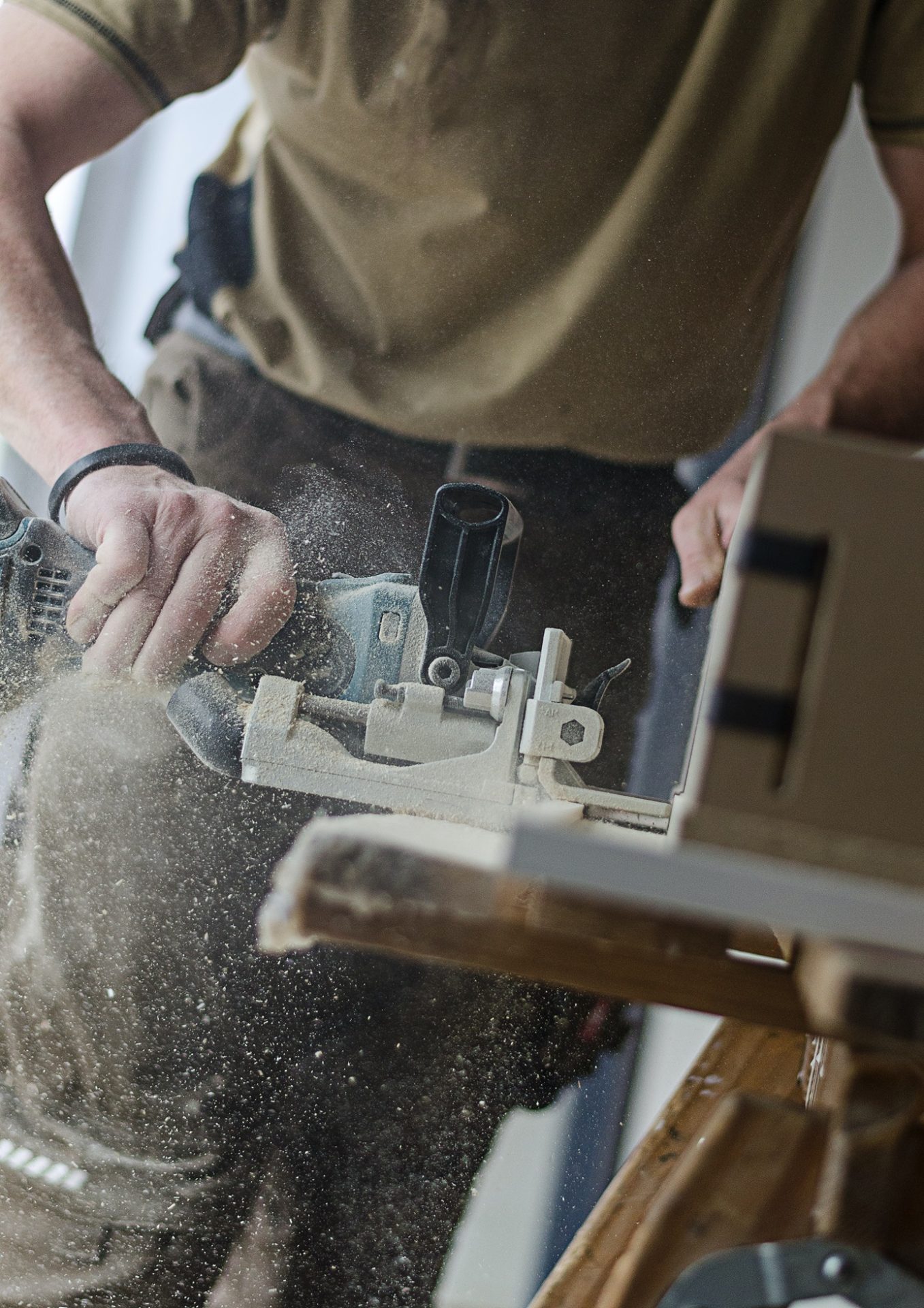The power of case studies: authentic narratives set your blogs apart
Case studies are an often-under-valued marketing tool that can have a profound impact on your business growth. How? Through good storytelling, you can prove that what you offer consumers works.
A well-written, detailed and descriptive case study can be the most persuasive content on your website. Besides word of mouth and referrals, they are one of the most effective ways to help a potential customer over the line.
Case studies give your business credibility and build trust, which is important. Secondly, and possibly more importantly, they set your blogs apart from the piles and piles of AI-generated content out there.
While AI-generated content might dazzle with its efficiency and excel in data processing, it is not that great at the art of storytelling. AI-generated content lacks the human touch needed for the writing of a genuine case study.
And that’s the key.
Real stories of triumph and transformation based on real experiences will set you apart in the churn of automated, generic web content.
In a world saturated with AI-generated blogs, case studies will stand out to both human readers and search engines alike.
If you want to set yourself apart from the competition, then
- be honest
- be yourself and
- share your story.
The core of case studies
People want real proof that your business delivers what it promises. Case studies offer that proof.
They’re not just stories, they’re detailed, real-world examples of how you solved a problem for a customer. They are windows into your product or service. This makes them valuable for both traditional search engines and AI-powered tools like ChatGPT and Google AI Overviews.
For example, when someone types: “How do mortgage brokers actually help?”, AI tools look for clear, structured, trustworthy content. A strong case study often gets picked up and featured in summaries.
What makes case studies powerful?
Case studies help you:
- Back up your marketing claims with facts
- Build trust and credibility with new customers
- Explain your services in action
- Share feedback and results from past clients.
Case studies really help:
- Service-based businesses
- Companies without flashy visuals
- Brands that rely on reputation, trust, and expertise.
According to marketing research firm Ascend2,, case studies are among the most trusted forms of marketing content. People trust stories backed by real data, outcomes, and client feedback.
Make your case studies AI-friendly
To appear in AI-generated answers, your case studies need to be:
- Well-structured: Use headings, bullet points, and short paragraphs
- Clear and direct: Use plain, conversational language
- Result-focused: Highlight specific benefits or improvements
- Real: Avoid jargon and generic claims: focus on real outcomes.
This format helps large language models scan your content, pull summaries, and present your business as a solution to users’ queries. And I can help you write it.
The power of the case study lies in how you use it
Not just limited to your website, case studies can be used across various marketing channels. From social media platforms like Facebook and LinkedIn to newsletters, they attract potential customers and help with search engine optimization (SEO) by creating backlinks from external platforms to your website.
Types of case studies
Case studies share the “how and why” of success. Therefore, they tend to follow a standard four-part format: the customer, the challenge, the solution and the benefits. A testimonial from a client is usually a great launch pad.
Problem-Solution case studies:
These focus on a specific problem faced by a customer and highlight how your product or service provided a solution. Read an example of a case study that we jointly wrote for a client’s interior decorating business.
“Desiree’s dining chairs were old and tired, and she wanted to replace them with similar ones because she liked the way they looked, and they were comfortable. But she was tired of the brown leather upholstery and thought it would be nice to introduce some colour into her “shades of brown” dining room. But what colour?
She asked family and friends for ideas and looked online for inspiration – but all she got was confused! She liked the idea of using blue, but what shade of blue and could blue work with brown? What should have been a simple decision was now in the “too hard basket”. So, she asked for my help and home decor ideas.
Get a local Auckland interior designer
I took her to a shop that sold the type of chair she wanted and also upholstered them in the customer’s choice of fabric. After she’d given them a pass on the “comfort” test, I showed her fabric swatches and she decided to be brave and go with my boldest suggestion.
Since she has 10 chairs, using only one colour for the upholstery could be too dominant or quite boring so I recommended that they be covered in 3 different fabrics. A geometric pattern in cream, dark brown, light blue and dark blue colours was used on 4 of the chairs, a plain light blue on 3 of them and a plain dark blue on the other 3. They were placed in alternating colours around the dining table according to a plan I’d drawn.
They loved my home decor help
Desiree is thrilled with the new look of her dining room which is a lot more exciting now. Her kids are amazed that blue can actually work with brown and her husband is talking about replacing the sofa and armchairs in the adjoining family room to match and further enhance the space.

Success story case studies:
These highlight achievements and positive outcomes your customers have experienced by using your product or service. Useful for demonstrating the value and impact your business can bring.
Home lighting plans
Kath and Mitchel recently purchased a new home – a wood cottage, designed and built in the 1920s. With very busy careers they didn’t have time to spare for updating and customizing the interior, so they enlisted my services.
Lighting is a key element in interior design. Knowing this, they asked me for an interior lighting plan.
Lighting for the living room
Since they used the living room to watch TV, eat on their laps and entertain, it required ambient, accent and mood lighting. It was important to them that the light fixtures reflect the character of the original cottage. They wanted the vaulted ceiling, a very special feature of the room, to be highlighted. Taking all this into consideration I came up with a living room lighting plan.
Kath and Mitchel adopted all the recommendations in the home lighting plan and are very pleased with the result.
Lighting makeover
The existing overhead spotlights functioned well in providing ambient and accent lighting, but the fixtures were outdated. I recommended replacimg them with smaller modern ones which should be positioned in the same spots but unobtrusively behind the beams so as not to distract from the beauty of the ceiling.
Additional ambient lighting should be introduced by removing the central overhead ceiling fan. It should be replaced with a chandelier, complementary in style to the cottage character and interesting enough to become a focal point. A dimmer switch allows for light to be adjusted according to the activity taking place in the room.
Mood lighting should be introduced by placing two lamps, one on each end of the table behind the sofa.
The lights on either side of the stone fireplace to be removed.
To accompany this description, I also drew a floor plan showing the placement and types of light fittings together with the dimmable, single and two-way switches.
I recommended the use of LED light bulbs and stressed the importance of having the existing wiring checked to ensure that it was up to standard.
On entering the living room, the gorgeous chandelier immediately catches the eye, draws it up to the vaulted ceiling and sets the cottage character style of the space. The variety of light fixtures available allow them to regulate the amount of light they want and where it shines.
Industry-specific case studies:
Tailored to showcase your expertise in a particular industry, they help you attract customers from a specific niche.
Before-and-after case studies:
As well as telling a story, these are great for visually demonstrating the transformation you have helped your customers with. Below is a case study for a building company.
Rather than move into a brand, spanking new home and grounds, Sandra and Terry decided to retain the character of their new home and breathe new life into it. They asked us to take an older home needing a refresh and turn it into something impressive. Sandra wanted to “make it her own”, all the while keeping the 80s farm-style feeling.
Working together, we considered the effects the renovation would have on the functionality of the house and their lifestyle. The result works beautifully.
Registered builders for renovations on the job
We worked closely with both clients and as a team we created a beautiful home. And we’re proud to say, we did it under budget. Sandra was delighted. All her boxes were ticked, and she’d been able to do all she’d wanted without blowing out expenses.
We did a full renovation. The team gutted and replaced the kitchen, fully renovated the bathrooms, laid new floors, knocked down internal walls, replaced the tired aluminium joinery, installed ranch sliders, painted throughout and built lovely big new decks. We used existing features and fittings and reshaped the original rooms, so they now flow into modern living spaces.

What we liked
We’re really pleased with the way we have managed to keep the 80s traditional, farmhouse feeling, yet created so much space and light. There are three stand-out features in this home for us. The first is the gorgeous, engineered laminate flooring throughout; we really like the tones. New cedar barn-style doors separating the dining and spacious lounge area are also a great feature.
However, the piece de resistance, we reckon anyway, is the entrance, which Wendy designed herself. The black aluminium door has mullions in the panels on either side, allowing more light in and creating an old-fashioned look.
Case studies build trust and drive decisions
When people are considering your product or service, they want more than just promises; they want proof. That’s why case studies matter. A well-written case study shows potential customers:
- How you solve real-world problems
- What kind of results you deliver
- Why others have chosen and trusted your business
- Today, buyers often search for phrases like:
- “Does Wordright actually deliver results?”
- “Real-world examples of Wordright in action”
- “Who else has used Worrdight and how did it go?”
Generative Engine Optimisation (GEO) ensures these case studies show up in AI-generated responses, helping build your credibility when customers ask specific questions.
Why case studies matter even more in the AI era
Case studies do more than sit on a website. They can:
- Increase trust with first-time visitors
- Offer helpful, story-based content for AI and SEO
- Be repurposed for blogs, newsletters, sales proposals and social media
- Help answer long-tail questions and specific objections
- If your competitors have clear, searchable case studies and you don’t, you may not be mentioned in AI-generated search results.
Need help writing your case studies?
Writing your own case studies can be tricky. You’re too close to the project, and it’s hard to know what your audience will find most useful.
That’s where I come in.
- I work with you to uncover the standout points and turn them into case studies that:
- Speak directly to your ideal customers
- Use simple, conversational language
- Follow a clear structure that AI tools can easily scan
- Highlight results, feedback, and the difference you made.
Whether you’re in trades, tech, education, health or retail, strong case studies can become one of your most persuasive marketing tools.
Make it easy for people – and AI – to choose you
Case studies help answer the exact questions people are asking. They build confidence, reduce hesitation, and guide decisions. They will serve as powerful tools in your marketing arsenal, especially when responding to specific inquiries. Case studies can be repurposed into newsletters, social media posts or FAQs so you’ll have an ongoing stream of relevant content.
Let’s tell your story in a way that makes people want to work with you. Get in touch.

